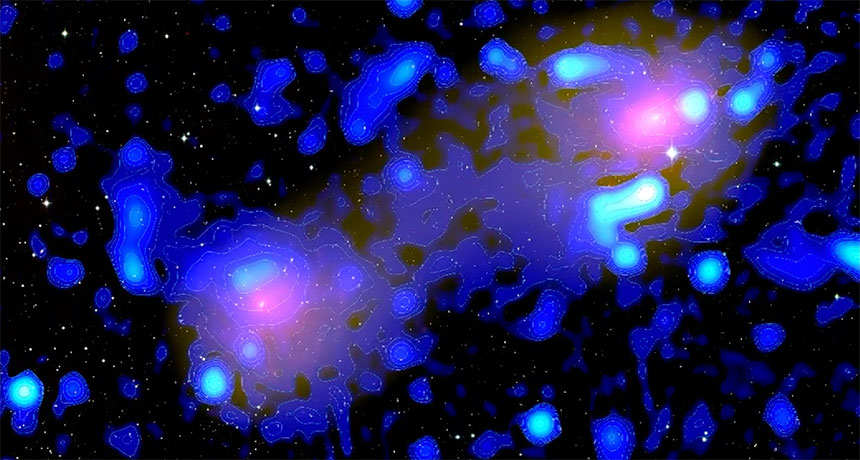In a first, magnetic fields have been spotted between two galaxy clusters
The finding suggests large structures in the cosmic web are magnetized

MAGNETIC CONNECTION Two distant galaxy clusters, Abell 0399 (left) and Abell 0401 (right), are connected by magnetic fields containing high-energy electrons. X-rays from the cluster cores are shown in purple, and radio emission from the magnetic bridge forms the blue-toned smear in between.
DSS, Pan-STARRS1, XMM-Newton, PLANCK satellite, F. Govoni, M. Murgia, INAF, Cjbeards, ASTRON